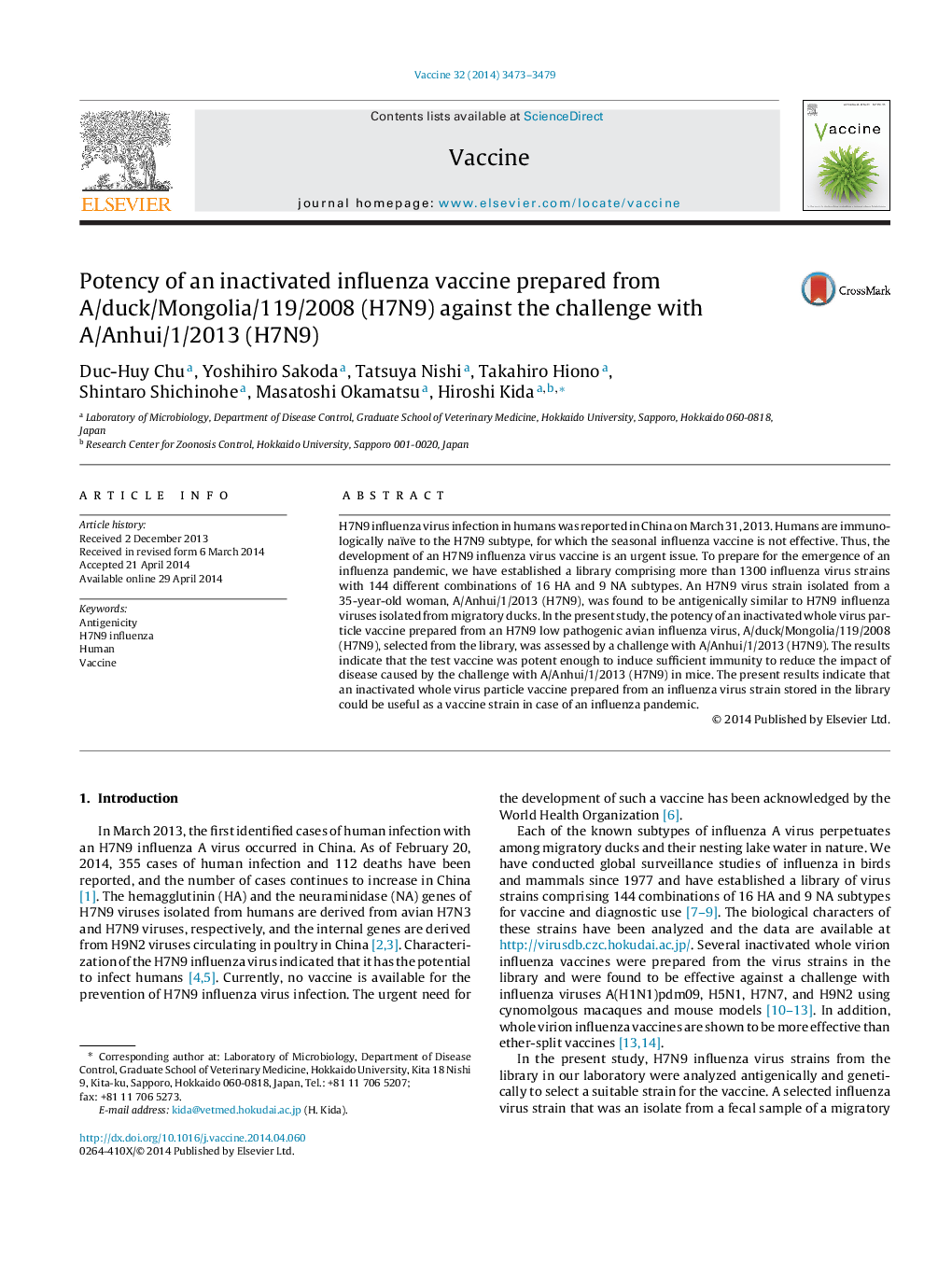| Article ID | Journal | Published Year | Pages | File Type |
|---|---|---|---|---|
| 2402460 | Vaccine | 2014 | 7 Pages |
•Duck/Mongolia/119/08 (H7N9) is antigenically similar to Anhui/1/13 (H7N9).•An inactivated whole virus particle vaccine is prepared from Duck/Mongolia/119/08.•The test vaccine induces protective immunity against the challenge with Anhui/1/13.
H7N9 influenza virus infection in humans was reported in China on March 31, 2013. Humans are immunologically naïve to the H7N9 subtype, for which the seasonal influenza vaccine is not effective. Thus, the development of an H7N9 influenza virus vaccine is an urgent issue. To prepare for the emergence of an influenza pandemic, we have established a library comprising more than 1300 influenza virus strains with 144 different combinations of 16 HA and 9 NA subtypes. An H7N9 virus strain isolated from a 35-year-old woman, A/Anhui/1/2013 (H7N9), was found to be antigenically similar to H7N9 influenza viruses isolated from migratory ducks. In the present study, the potency of an inactivated whole virus particle vaccine prepared from an H7N9 low pathogenic avian influenza virus, A/duck/Mongolia/119/2008 (H7N9), selected from the library, was assessed by a challenge with A/Anhui/1/2013 (H7N9). The results indicate that the test vaccine was potent enough to induce sufficient immunity to reduce the impact of disease caused by the challenge with A/Anhui/1/2013 (H7N9) in mice. The present results indicate that an inactivated whole virus particle vaccine prepared from an influenza virus strain stored in the library could be useful as a vaccine strain in case of an influenza pandemic.
